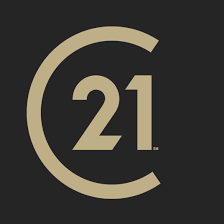Bank of Canada Rate Announcement July 30, 2025
Bank of Canada Rate Announcement July 30, 2025: What Canadian Homeowners and Investors Need to Know
The Bank of Canada's upcoming interest rate decision on July 30, 2025, has captured the attention of homeowners, investors, and financial markets across the country. With mortgage rates, borrowing costs, and investment returns all hanging in the balance, understanding what to expect from this crucial announcement could help you make better financial decisions.
When and Where to Watch the Announcement
Mark your calendars: the Bank of Canada will announce its latest policy rate decision on Wednesday, July 30, 2025, at 9:45 AM Eastern Time. This announcement will be accompanied by the central bank's quarterly Monetary Policy Report, which provides updated economic forecasts and detailed analysis of the factors influencing their decision.
The timing is significant for Canadian consumers and businesses, as any rate changes typically flow through to variable mortgage rates, lines of credit, and savings accounts within days or weeks of the announcement.
Current Interest Rate Landscape
The Bank of Canada's overnight rate currently sits at 2.75%, where it has remained unchanged for the past two consecutive meetings. This represents a dramatic shift from the aggressive rate-cutting cycle that began in June 2024, when the central bank started reducing rates from their peak of 5.00%.
Over the past 13 months, the BoC has delivered substantial relief to borrowers, cutting rates by a total of 225 basis points (2.25 percentage points). However, this easing cycle appears to have hit the pause button as policymakers grapple with persistent inflation pressures and evolving economic uncertainties.
What Economists Are Predicting
Financial market consensus strongly points toward no rate change on July 30. Major Canadian banks, independent economists, and market indicators all suggest the Bank of Canada will hold its policy rate steady at 2.75%.
This expectation reflects several key factors:
Inflation concerns remain elevated. While headline inflation has cooled to 1.9% – within the BoC's target range of 1-3% – core inflation measures continue hovering around 3%. These "sticky" core readings, particularly in services sectors, have given policymakers pause about declaring victory over inflation.
Economic growth remains fragile. Canada's GDP growth has essentially stalled in the second quarter of 2025, with manufacturing and retail sectors showing particular weakness. Wildfire disruptions and ongoing trade tensions have further complicated the economic picture.
Trade uncertainty adds complexity. The evolving trade relationship with the United States, including recent tariff implementations, has introduced new inflationary pressures while simultaneously weighing on economic growth prospects.
Key Factors Driving the Bank's Decision
Inflation: The Double-Edged Challenge
The Bank of Canada finds itself navigating a complex inflation environment. While headline inflation at 1.9% appears encouraging, the central bank remains concerned about underlying price pressures. Core inflation measures, which strip out volatile items like food and energy, continue running closer to 3%.
Service sector inflation has proven particularly persistent, with categories like restaurant meals, personal services, and housing-related costs showing renewed upward pressure. This "stickiness" in core inflation has made BoC officials cautious about premature rate cuts that could reignite broader price pressures.
Economic Growth: Mixed Signals
Canada's economic performance has been lackluster, with GDP growth essentially flat in the second quarter. Key sectors tell a story of ongoing challenges:
- Manufacturing output has declined due to trade disruptions and supply chain uncertainties
- Retail sales have remained weak as consumers adjust to higher borrowing costs
- Wildfire activity across several provinces has disrupted economic activity and supply chains
However, some positive developments have emerged. Employment growth has shown modest improvement, and certain regions have demonstrated resilience despite broader economic headwinds.
Trade Relations: The Wild Card
Perhaps no factor carries more uncertainty than Canada's trade relationship with the United States. Recent tariff actions have already begun affecting import prices, creating inflationary pressures that complicate the Bank of Canada's mandate.
The central bank must balance supporting economic growth through lower rates against the risk that a weaker Canadian dollar could amplify the inflationary impact of trade tensions. This delicate balancing act has contributed to the BoC's more cautious approach in recent months.
What to Watch in the July 30 Announcement
Updated Economic Projections
The accompanying Monetary Policy Report will provide crucial insights into how the Bank of Canada views the economic outlook. Previous reports have shifted away from providing single "base case" forecasts toward presenting multiple scenarios, reflecting the heightened uncertainty facing policymakers.
Pay particular attention to:
- GDP growth forecasts for 2025 and 2026
- Inflation projections across different time horizons
- Assessment of trade-related economic risks
Forward Guidance Clues
Governor Tiff Macklem's press conference following the announcement often provides the most valuable insights into future policy direction. Listen carefully for key phrases that signal the central bank's thinking:
- "Data dependent" suggests the BoC will base future decisions on incoming economic indicators rather than following a predetermined path
- References to "trade risks" indicate ongoing concern about U.S.-Canada relations
- Discussion of "inflation dynamics" reveals how confident officials feel about achieving their 2% inflation target
Implications for Canadian Consumers
Mortgage Holders
Variable rate mortgage holders can expect their payments to remain unchanged following this announcement. However, those considering renewals or new mortgages should understand that fixed rates may remain elevated as bond markets price in uncertainty about the future policy path.
Savers and Investors
High-yield savings accounts and GICs are likely to maintain current attractive rates in the near term. The pause in rate cuts means savers can continue benefiting from elevated interest income, though this dynamic could shift if the BoC resumes cutting later in 2025.
Businesses
Companies with variable rate debt can plan around stable borrowing costs for now, but should prepare for continued uncertainty. The emphasis on trade risks suggests businesses exposed to cross-border activity should continue stress-testing their operations against various scenarios.
Looking Ahead: When Might Rates Move Again?
Market expectations for future rate cuts have been pushed further into the future. Most analysts now expect that any additional rate reductions won't occur until late 2025 at the earliest, and only if specific conditions are met:
Inflation must show sustained downward movement. Core inflation readings need to demonstrate clear progress toward the 2% target, particularly in services sectors.
Economic growth may need to weaken further. A more pronounced economic slowdown could force the BoC's hand, especially if unemployment rises significantly.
Trade tensions could be the deciding factor. How U.S.-Canada trade relations evolve will likely determine whether the BoC has room to cut rates or needs to maintain higher rates to support the currency.
Bottom Line for Your Financial Planning
The July 30 Bank of Canada announcement is expected to maintain the status quo, with rates holding steady at 2.75%. This represents a pause in the central bank's easing cycle as officials assess competing pressures from persistent inflation, weak economic growth, and trade uncertainty.
For consumers and investors, this environment suggests:
- Variable rate products will likely remain stable in the near term
- Fixed rate opportunities should be evaluated carefully, as future rate cuts are increasingly uncertain
- Economic uncertainty supports maintaining diversified financial strategies
The key message from the Bank of Canada continues to emphasize flexibility and data dependence. Rather than committing to a predetermined path, officials are keeping their options open as they navigate one of the most complex economic environments in recent memory.
Stay tuned to the July 30 announcement for the latest signals about where Canadian monetary policy heads next. In this environment of heightened uncertainty, each BoC communication carries extra weight for understanding the future direction of interest rates and the broader Canadian economy.

